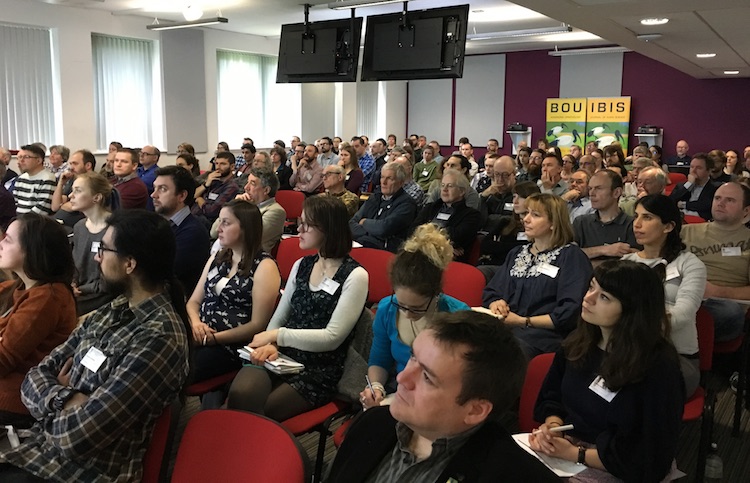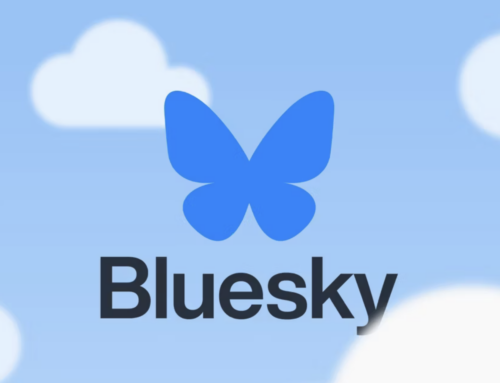The future of birds, novel technologies and combined solutions
Having never been to a British Ornithologists’ Union conference before, but hearing nothing but good things about them, I finally decided to get my act together and make an appearance at #BOU2018. The subject of this year’s conference was “21st century ornithology: challenges, opportunities and decisions”, and I was hoping that by attending I could get a better understanding of what might happen in the future and what we may be able to do about it. I wasn’t disappointed, but more on that later. The first thing that struck me is that this clearly was not just a “British” conference, but a multinational event, which was extremely welcoming and friendly. Everyone was here for the same thing – their love of birds and to have a good time!
In my experience, early-career researcher (ECR) events at conferences are generally useful to attend, but can be hit or miss. Thankfully, all the events at #BOU2018 were worthwhile, providing an informal platform to meet other ECRs, think about our futures and mingle with “experts”. The pre-conference ECR workshop was split into three separate sessions. The first, led by Jenny Gill (@JenGill3) and Jen Smart (@drredshank), explored what makes a good, or bad, research question. This will come in very useful when planning future research and applying for grants. The second, presented by Nigel Hawtin (@nigelhawtin), gave an overview of how to present data effectively in infographics, with a particular emphasis on social media. Graham Appleton (@GrahamFAppleton) and Nicola Crockford (@numenini), ran the third session, detailing the complexities of influencing international conservation policy, and how choosing the right person to sit in the back of a taxi with can make all the difference! One of the major points conveyed was that we (ECRs) are the future of conservation, and were encouraged to go to the pub together in order to foster future connections – advice we were all happy to hear. The further ECR session (on the Wednesday evening) consisted of round table discussions with “experts” at varying career stages and plenty of free booze!
Hugh Possingham (@HugePossum) kicked off the conference with the Alfred Newton Lecture, giving a whistle stop tour of how maths can be used to help allocate conservation funds using “Decision Science”. Following on from this, the sheer diversity of topics covered was striking, ranging from individual based models of swan movement behaviour (@kevinwood), to predicting the response of bird populations to future land-use scenarios (@tomfinch89) and climate change impacts on seabird populations (@CEHseabirds). As the name of the conference would suggest, there was a strong emphasis on modern technologies and novel methods, allowing new questions be asked and previous challenges tackled, during what Martin Wikelski (@martinwikelski) coined Ornithology v2.0. A few examples include: using Unmanned Arial Vehicles (not drones!) to census gull populations (@mattwood), fine-scale tracking of goatsucker (AKA European Nightjar Caprimulgus europaeus) foraging locations (@RevNJ), and using Google images in Morphic to quantify spatial variation in visible phenotypes (@arjundevamar).
The new Nottingham venue main lecture hall with its multi-screens ensured everyone had a great view of what was being presented.
This focus on modern technology was further emphasised in Steve Dudley’s (@stevedudley_) talk, which documented the rise of social media in #ornithology and its role in connecting our community. Steve attributed this increase to the development of altmetrics, which track online attention in real time, and provide a better measure of wider research impact than traditional citation based metrics. As an ECR, this is a topic I am particularly interested in, allowing me to expand the impact and reach of my research through a range of online streams including social media (Twitter, Facebook), Wikipedia, the press and blogs. There is a growing body of evidence as to the benefits of strengthening a paper’s Altmetric score, including, crucially, more citations. For me, one of the most glaringly obvious things to note is that it really doesn’t take a great deal of effort – so get on board!
#TheTweetingBird its rise, relevance and impact in #ornithology
A look at the take up of #socialmedia by avian researchers and how online mentions now contribute to citations as measured by #altmetrics #BOU2018 pic.twitter.com/zmn4Xay6Hu— Steve Dudley (@stevedudley_) March 29, 2018
Click to view Steve’s entire presentation thread
One of the overarching themes of this conference was that although the 21st Century will deliver many challenges from an avian conservation perspective, modern technologies and approaches are helping us find solutions. Coming together, as we did in this conference, will only make this goal more achievable and it’s up to us as the ornithological community to rise to that challenge.
I thoroughly enjoyed my time at #BOU2018, learnt lots of new science and made plenty of new friends, which begs the question – why haven’t I been before?
DIARY DATE | #BOU2019 ‘Tracking Migration” | 26-28 March 2019 | University of Warwick, UK | Look out for the call for papers later this year! | Organisers@VMendezAragon @WMGVs | #ornithology #climatechange #renewableenergy #BOU2018 pic.twitter.com/EzCyuzpFmS
— BOU (@IBIS_journal) March 29, 2018
The BOU is very grateful to Prof Bill Sutherland (Chair), Dr Helen Baker, Dr Darren Evans and Dr Aldina Franco for putting together an excellent programme for BOU2018.
The BOU is also very grateful of the support of Leica UK and NHBS for providing the ECR prizes, and to Biotrack, PathTrack, Wildlife Acoustics for their continued support of our annual conference.
Blog posts express the views of the individual author(s) and not those of the BOU.
If you want to write about your research in #theBOUblog, then please see here.







